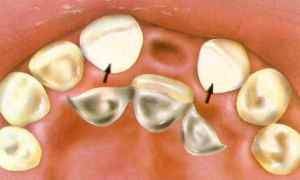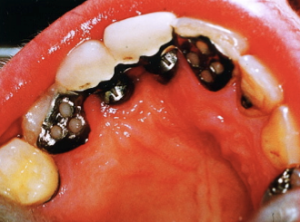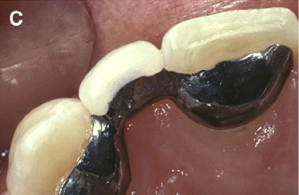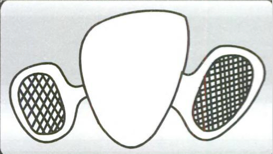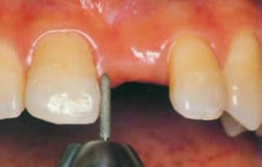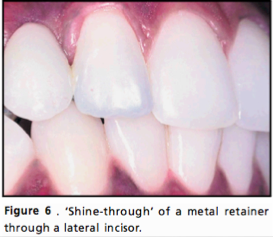Blog Archives
Resin Bonded Bridges
Resin bonded bridge is a minimally invasive fixed dental prosthesis that is luted to tooth structures, primarily enamel, which relies on composite resin cements for retention.
Types
- CANTILEVER
- FIXED-FIXED
- FIXED-MOVABLE
- HYBRID
Cantilever 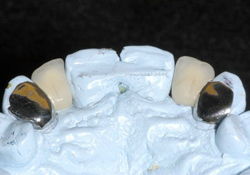
- Involves the use of single retainer
- Abutment tooth maybe either mesial or distal
- Less expensive, but limited to replacing one
missing tooth
Fixed-fixed
- One or more retainers are placed on either
side of the pontic - Differential movement of abutments can
result in bond failure - This design of bridge is indicated where
excursive movements on pontics cannot be avoided
Fixed-movable
- Design is in two parts, keyed together by a
non-rigid attachment
- Connector which may be either ready or laboratory-made,
permits movement of the two parts relative to each other in vertical direction mainly - Provides stress breaking action
- Should be used in short spans and where opposing
proximal walls of abutment cant be prepared parallel
Hybrid 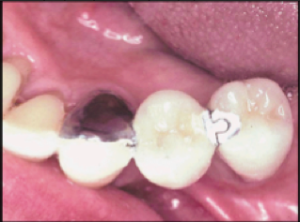
- A combination of a conventional retainer at one end
and a resin-bonded retainer at the other end of the pontic - Indicated where one of the abutments is minimally restored,and a resin-bonded retainer is used at this site to conserve tooth tissue
- The male part of the joint is often attached to the
resin-bonded retainer to simplify maintenance when de-bond occurs
History
ROCHETTE BRIDGE
- Wing like retainers with perforations through them to enhance resin retention
- Macromechanical retention +
silane coupling agent to produce
adhesion to metal
MARYLAND BRIDGE
- An electrolytic etching procedure for non-precious ceramic bonding alloys to provide a microporous surface that allows micromechanical interlock with the cement
- Thinner wings and no perforations
VIRGINIA BRIDGE (Lost Salt Technique)
- Salt crystals (150 to 250 μm) were incorporated into wax and removed in solution leaving cubic retentive pits
- Produces roughness on the inner surface of the retainer
- This was a time saving method and more retention is achieved compared to the technique of etching
CAST MESH FIXED BRIDGE
- A net like nylon mesh is placed over lingual surface of abutment teeth on the cast
- It is then covered by wax, with the undersurface of the retainer becoming mesh like when retainer is cast
Advantages of Resin bonded bridges
Beneficial incase of decay free teeth, large pulp chambers, slender lower incisors
- Expediency
Little need to provide temporary crown
Reduced chairside time; overall cost is minimal
- Convertibility
Less destructiveness
Possible to upgrade to a conventional
bridge without detriment to health of
abutment teeth
- Supra gingival margins
Mandatory for RBB
Soft tissue is undisturbed, facilitates plaque removal
- Acceptance by the patient
Technique involves minimum of “injections” and “drilling”
- Rebonding Possible
Disadvantages of Resin bonded bridges
- High failure rate
More frequent debond as compared to conventional
Plaque may trap underneath this de-bonded retainer, which can result in carious destruction if undetected
Problems can occur with incisal shine-through of metal if an opaque cement is not used
- Occlusal interferences
Mostly retained by lingually placed metal flanges
Not possible to reduce abutment teeth sufficiently
Frequent problem when upper arch is involved
- Redistrubution of space between pontic and abutment teeth
- Limited tooth replacement
Small spans tend to be more successful than large ones
- No Alignment correction
Indications
- Unrestored/minimally restored teeth
- Sufficient good quality enamel
- Sufficient inter-occlusal space for retainers
exists - Intermediate prosthesis prior to implants
- Large pulp chamber/ young patients
- Splinting periodontally compromised teeth
- Maxillary incisor replacements
- Single posterior tooth
replacements
Contraindications
- Insufficient occlusal clearance
- Deep vertical overbite
- Thin and/or defective enamel
- Short clinical crowns
- Extensive loss of tooth structure
- Parafunctional habits
- Heavily restored teeth
- Nickel sensitivity
